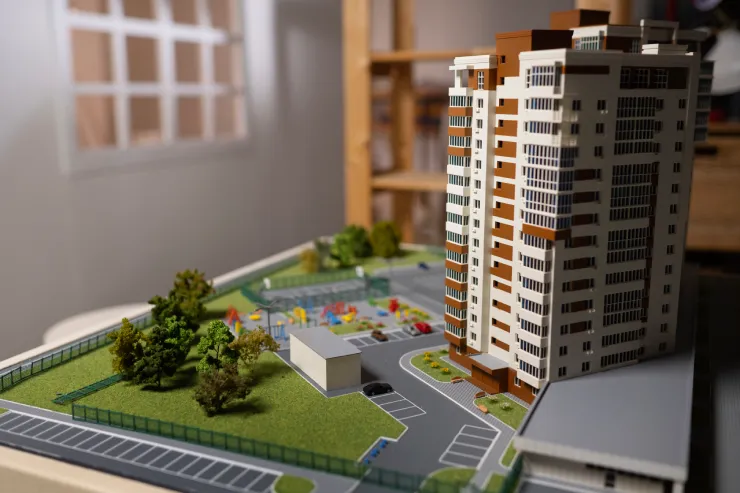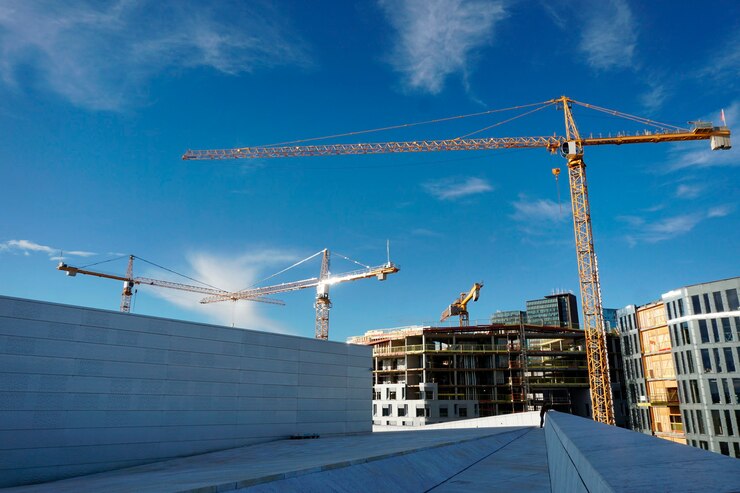Table of Contents:
- Introduction
- Top Reasons Behind Price Differences in Apartments in the Same Projects
- Strategic Apartment Location
- Proximity to Amenities
- Size and Layout
- Customizations and Upgrades
- Market Demand and Timing
- Conclusion
Intro:
Everyone dreams of home—a place where we find comfort, create memories and build our lives. This is why we work hard to secure a home that not only meets our current needs but also supports our future aspirations. However, this requires careful planning and proper research.
The real estate market has evolved drastically. There is no longer just one or two factors that determine the prices of an apartment. In fact, two apartments in the same building can have different prices. So, how do you decide which option is the best for you? And what are the factors that influence this price difference?
Below, we have shared the top 5 factors that lead to price gaps in the same housing project. Read on to know what they are and how they are crucial for any home-buying guide:
1. Strategic Apartment Location:
Provident Botanico Explore the housing projects by Grade A developers, and we’re confident you’ll find apartments you love, particularly for their exceptional locations. The reasons could be varied – the view from the balcony, proximity to schools and healthcare facilities, the serene surroundings, floor level, and so on. And these reasons make them a bit more expensive than the other apartments in the same housing project.
Here are some examples for a better understanding:
- Proximity to Amenities: Apartments located closer to amenities like a clubhouse, swimming pool, or gym may have higher prices due to convenience and accessibility. Living near these amenities not only provides easy access to recreational activities, social gatherings, and fitness options but also fosters a strong sense of community—a quality that many people seek in today’s fast-paced world.
- Level of the Apartment: This is one of the most common factors behind price rises in some apartments. Apartments on higher floors often come with plenty of advantages, like better ventilation, less noise, and better views, which can make them more desirable—and more costly—compared to apartments on the lower floor levels.
- Placements: Just like the level, placement also impacts the pricing of apartments. For instance, corner apartments often benefit from better natural light, improved ventilation, and enhanced privacy, reducing the risk of dampness. This typically results in a higher value for these apartments compared to centrally located apartments.
- Vaastu Alignment: In India, many buyers look for homes that are designed with Vaastu principles in mind. For example, apartments with main entrances facing specific directions, such as east or north, are considered more auspicious and desirable. Similarly, features aligned with Vaastu elements include avoiding bathrooms near the main entrance and having the main door open clockwise, etc.
If an apartment costs more than others in the same project due to these location features, this extra cost is known as a “preferred location charge.” It reflects the added value of these desirable features.
2. Size and Layout
When it comes to apartments, size and layout also play a big role in their price difference. For instance, homes that have more square footage and well-thought-out floor plans tend to cost more.
Similarly, if an apartment has extra space with additional rooms like a study room or utility areas which others in the same building don’t have, a price difference is inevitable.
Moreover, a well-designed layout that maximizes space can also add to the appeal and value of an apartment. A great example of it could be the built-in storage, like cabinets or shelves in hallways, and utilizing every nook, so there’s minimal wasted space. Or a layout where the kitchen, dining, and living areas are seamlessly connected to create an open space for the family.
So, if you’re looking for larger rooms or a better layout with maximum carpet area, be prepared for a higher price tag.
3. Customizations and Upgrades
Another reason why apartments in the same project may be priced differently is due to customizations and upgrades.
Apartments with high-end finishes like hardwood flooring and advanced home automation systems like controlled lighting appliances or video doorbells often come with a higher price tag.
Similarly, some apartments also have high-end upgrades like top-of-the-line kitchen appliances or spa-like bathrooms with rainfall showers or a bathtub installed. All this can make an apartment more stylish and functional, which can increase its price compared to standard apartments in the same building.
4. Construction Stage
Timing can greatly impact apartment prices in the same project. For instance, if you buy an apartment during a pre-launch offer or early stage of development, it might be available for a lower price.
On the other hand, ready-to-move-in apartments typically cost more due to the convenience of immediate occupancy. Moreover, this type of purchase also takes away the uncertainty around the quality of the finished apartment when compared to a pre-construction buying stage. In the end, it’s the buyer’s decision to either buy a home in the pre-construction stage or the ready-to-move-in stage. The prices, however, would be different for both.
5. Market Demand and Timing
Market demand and economic conditions have impacted apartment pricing for the foreseeable future. When there’s high demand in a sought-after area, prices tend to rise because buyers are eager to secure a property in that location.
For example, imagine a housing project in a booming part of town where a new tech hub is opening. The increased demand for housing in this area might drive up prices for all apartments, with particularly sought-after ones, like those on higher floors or with great views, seeing even higher price tags.
On the other hand, if the economy slows down and fewer people buy, the same apartment might see reduced prices or special offers to attract buyers. We would suggest you try property valuation online to determine the market value and then decide what suits your budget.
In Conclusion
Purchasing a home is an investment that represents more than a financial commitment; it’s a step towards stability and growth in life. This is why some people also don’t mind spending a little extra on an apartment. They tend to choose enhanced features, better locations, or added amenities, as they recognize the long-term value and comfort these factors bring.
If you also have the opportunity to invest in a property that aligns with your vision of the ideal home, it may be worth considering the additional cost. For a quick estimate, consider a property valuation online. This way, you can make a better decision that can enhance your quality of life for years to come.
-
- Customizations and Upgrades
Customizations and high-end upgrades can also increase a apartment’s charges. They often have top-notch fittings, high-end appliances, and stylish interiors, which make them more expensive.
-
- Market Demand and Timing
The real estate market is dynamic. Flats bought during pre-launch offers can be cheaper, while ready-to-move-in ones might be pricier due to convenience. Economic factors and buyer demand also play a crucial role in pricing disparities.
Conclusion
Knowing what influences flat prices can help you make a better investment. Be sure to consider these factors before making your next move.








